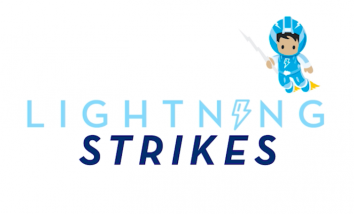Many of you #AwesomeAdmins may have already transitioned your company to Lightning Experience, or are well on your way! Today, we’re highlighting some of the benefits of Lightning Experience that your fellow Trailblazers are experiencing, firsthand. A few months ago, we ran the #LightningStrikes community sweepstakes and asked our Lightning Trailblazers to share tips and […]







 Have them do their job in Lightning: Meet with this super user and enable Lightning just for them using a permission set. Do this during or right before the meeting so you can walk them through the new features in person and get them comfortable. Ask them to do their job in Lightning for one week and take notes along the way.
Have them do their job in Lightning: Meet with this super user and enable Lightning just for them using a permission set. Do this during or right before the meeting so you can walk them through the new features in person and get them comfortable. Ask them to do their job in Lightning for one week and take notes along the way. Ask for feedback: This is an essential part of the rollout process. The more feedback you get from your users, the more you can do to ensure a smooth rollout for the entire company. Instead of spending weeks analyzing what could be various issues, have your user do testing and give you a list of what is not working for him or her. This is the best way to prioritize your next steps.
Ask for feedback: This is an essential part of the rollout process. The more feedback you get from your users, the more you can do to ensure a smooth rollout for the entire company. Instead of spending weeks analyzing what could be various issues, have your user do testing and give you a list of what is not working for him or her. This is the best way to prioritize your next steps. Expand to a few more people from the same department: Once you have gathered feedback from your super users and made changes or done training where needed, you can begin rolling out Lighting to more users from that department. With more users using Lightning, create a chatter group for them to provide feedback and ask questions. This creates a feedback loop which you can use to inform upcoming pilots and customizations.
Expand to a few more people from the same department: Once you have gathered feedback from your super users and made changes or done training where needed, you can begin rolling out Lighting to more users from that department. With more users using Lightning, create a chatter group for them to provide feedback and ask questions. This creates a feedback loop which you can use to inform upcoming pilots and customizations. Rollout and repeat: Continue this process until you have your company on Lightning! Rollout by department and job function in this manner until all of your users are in Lightning.
Rollout and repeat: Continue this process until you have your company on Lightning! Rollout by department and job function in this manner until all of your users are in Lightning.


